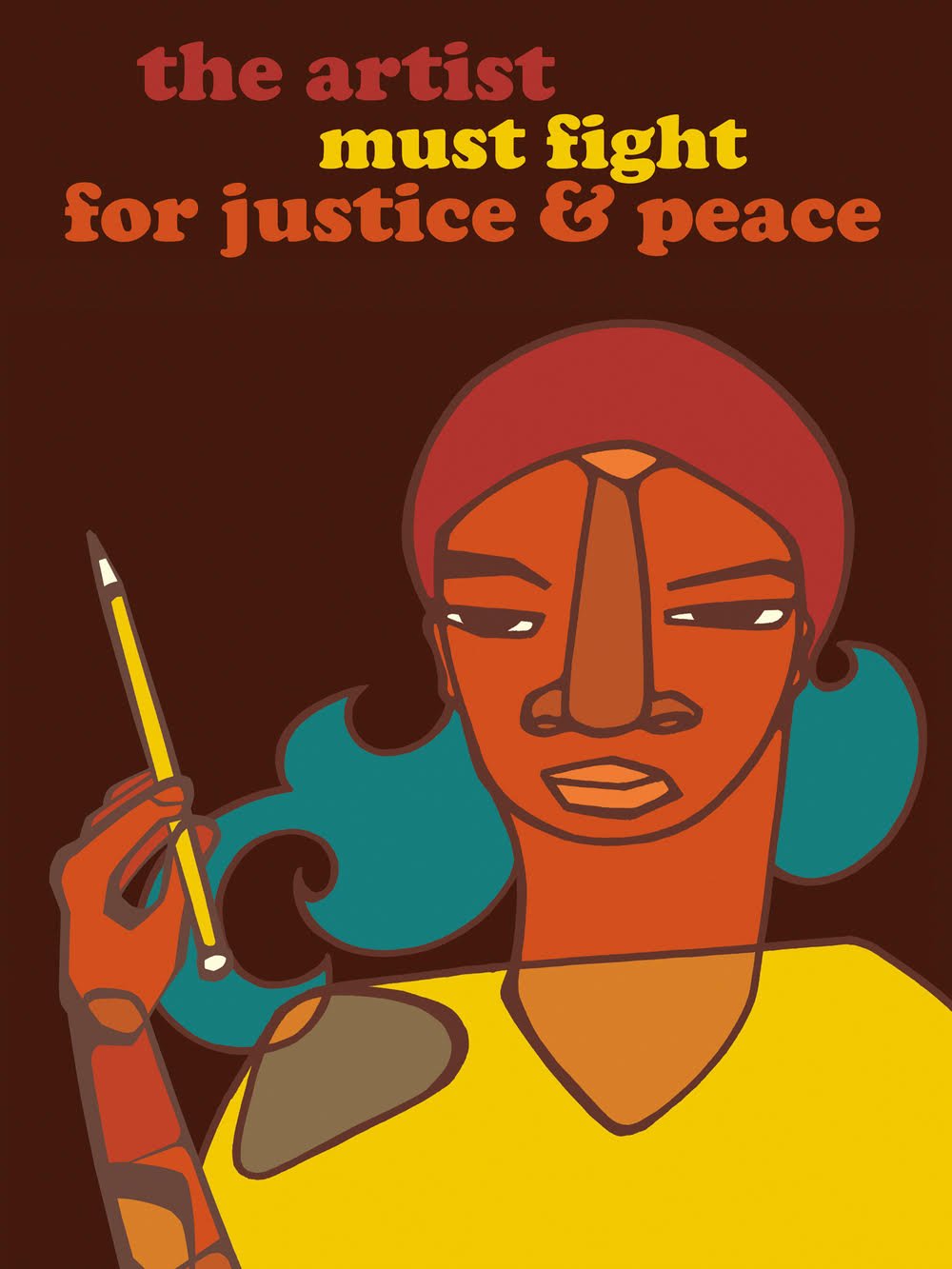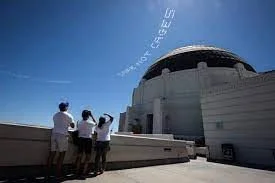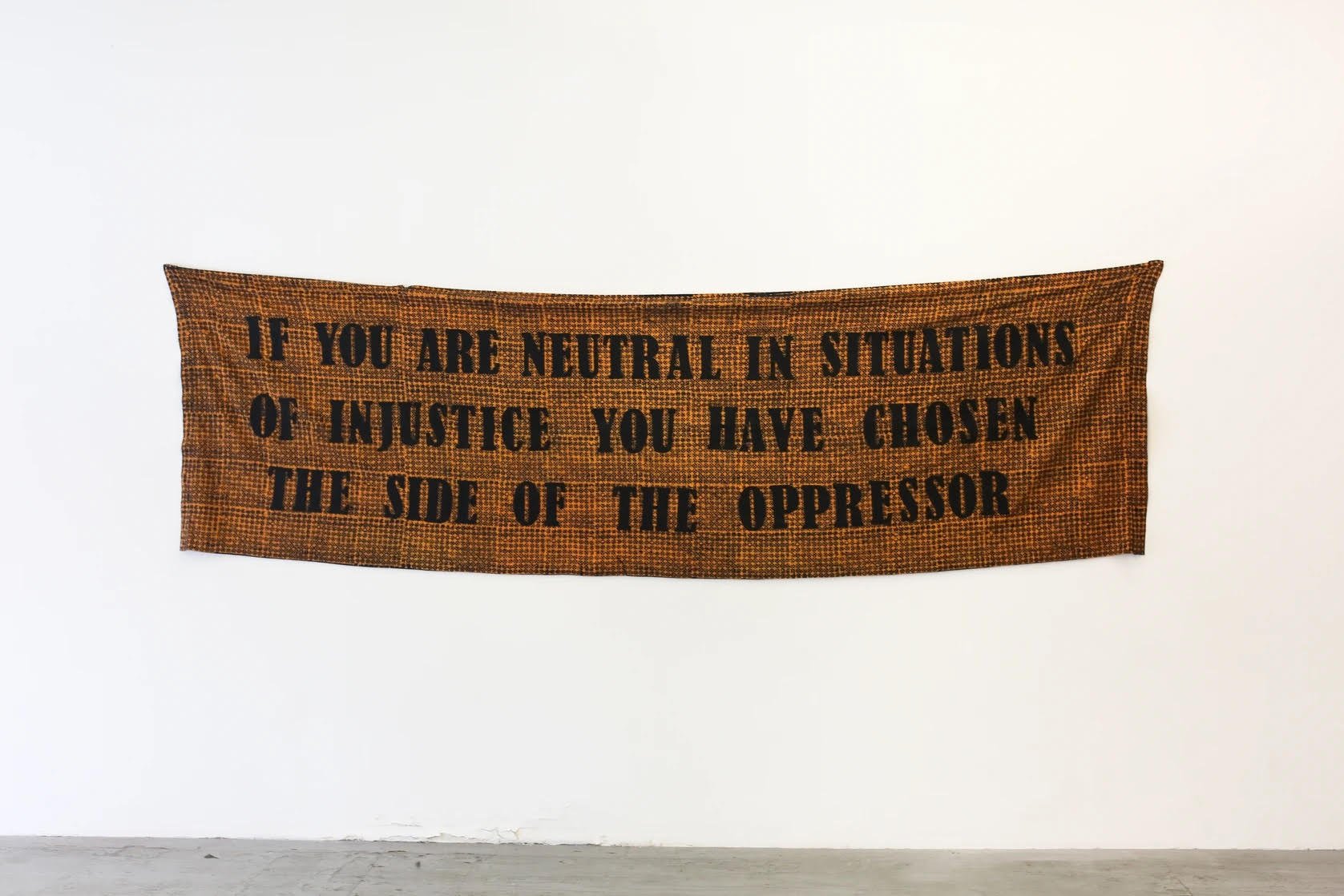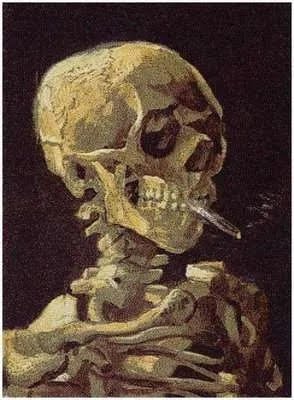Creative Confrontation: Art, Advocacy and Activism
If the average attention span is 8 seconds, how can I get you to care about gun violence? If 31% of adults say they are online almost constantly, how do I break through for you to act on climate change?
The challenge of adopting conventional practices to advocate for social change in a meaningful way, is real. With so many systemic issues and injustices still prevalent all around us, and the fact that news about these events is readily available and often in real-time, it can be overwhelming. This level of access to news and events is a first for humanity. Instead of prompting action, some people can become desensitized or unsure how to help. Those trying to spread an important message may be at a loss for an effective strategy because of an overwhelming sense of helplessness to tackle every problem presented to us, some on a daily basis. But there is a tactic that has been used effectively, both intentionally and unintentionally, to capture our attention–art. Art is fundamentally tied to our humanity but is not always seen as a means for advocacy.
When some people think of art, they may recall the drawings they did as a child. Or the multi-billion-dollar art industry. While others may think about the same few famous painters often cited in discussions of art history. These are all certainly art but there is a whole other side, an even more powerful side of art, rooted in seeking change. A side with a strong voice, possibly stronger than what can be spoken.
Creating A Personal Connection Through Art
From a young age, I have always been drawn to art. Though at that time I didn't refer to myself as an artist, I couldn't stay away from it. In high school, I picked up a camera, got to exploring in the dark room, and I fell in love. The creative expression I found in artistic endeavors gave me a sense of understanding I could not find anywhere else. In college, I was originally only going to minor in art, but soon craved more and completed a full art major. While today I don't have as much time as I would like to be an active creator, I am always surrounded by amazing art, and I’m aware of it. The walls in our home are filled with art that is personal to me, created by artists I have gotten to know, some who are important parts of my life–some like family. I can appreciate a beautiful painting, photograph, or sculpture, but there is something special when a piece taps into another part of my being with messages and meanings that demand attention, and often, action. These works can say so much without having to speak a single word or use any labels, making them so much more accessible. I know I am not alone in gravitating toward art that has a deeper meaning, whether or not I can fully understand it.
Art has the ability to create powerful change. It's a way of starting a conversation that sometimes words cannot. Activist art embraces a wide variety of artists, art forms, and purposes. Various forms of expression are used, such as painting, multimedia works, street art, performance, graffiti, installations, and so much more. The desired outcome of activist artwork also varies extensively. Works can challenge racism, sexism, war, and other injustices. They usually focus on political and social issues and share a goal of changing or influencing public opinion and actions. This art is something special with its defying and opposing message confronting the viewer.
Creating Protest Art
Advocacy art is also not new as it has been used by activists throughout history. Sometimes known as protest art, many artists have been successful in generating change and new ideas with their work. Most works are not just “pretty pictures” but include in-depth references and symbols that become widely known and promote social change.
I have had the great honor to see and be a part of the works of many art activists that have and continue to inspire me. One such incredible example is a non-profit organization I am honored to serve as the board chair for, Change The Ref. Change The Ref was founded by Manuel and Patricia Oliver. Manuel was always an artist. He and Patricia are one of the best examples of taking what you know, what you’re good at, and using it to demand change. Change The Ref utilizes art and creative confrontation to advocate against gun violence, the NRA, and politicians enabling the problem. The organization was created by Manuel and Patricia, parents of Joaquin Oliver who tragically lost his life on February 14th, 2018, in the Parkland Florida shooting at Marjory Stoneman Douglas High School. Joaquin was one of the 17 victims taken that day from their families at the hand of gun violence. Manuel and Patricia work to encourage young people and future leaders so they have the power to create change. And through powerful artworks and creative means, they show that change is necessary. Change The Ref’s activism rooted in creative expression seems new as there haven't been many groups whose main tool is art to demand an end to the gun violence epidemic in the United States. They have had great success in spreading their message, which I believe is partly due to both their passion and their powerful use of art.
Art has also been used to mobilize people in support of addressing the climate crisis too. The ability to connect with people utilizing art shows the beauty of the things we are at risk of destroying and the injustices being carried out against already marginalized communities in the name of colonialism and “progress.” The use of art is quite literally showing people why we need to act, or else the only pretty scenery we will experience will be in paintings. In this time, where advocacy is particularly difficult as we compete
for people’s attention, I have seen activism art spark within people, connecting them to particular issues and moving them to action.
Art is something that's been missing from my life recently. It is certainly all around me, and I love having that access. But I don't get to create as much anymore. For my own overall wellness, I am trying to get back to creating. But also, because I am always trying to do better, I know the power of communicating through art and I know it will make my activism and impact that much more powerful.
I feel like sometimes it can be scary to get involved in several of the issues we’re facing, especially if you're new to advocacy, activism, or even the political process. It can all seem so big and overwhelming. But everyone is good at something, and leaning into what you’re good at, sharing that skill or talent with the movement is what helps create change. Even if it doesn't seem typical or conventional, it can be hugely impactful. Art is one of those places where maybe even a handful of years ago, the general population may not have viewed artists as change makers. Today, we know that not only do artists have an important role to play in movements for justice, but they are also often using their incredibly powerful work to lead and create change in a hugely impactful way–oftentimes with more efficacy than traditional modes of communication. When I’m lost in a compelling piece of art, I am happily following its lead in pursuit of progress.
Here are 6 Art Activists You Should Check Out:
“Artist Must Fight”
By: Favianna Rodriguez. “Her art and praxis address migration, gender justice, climate change, racial equity, and sexual freedom.”
“Care Not Cages”
By: Patrisse Cullors
“In Plain Sight is a coalition of 80 artists, led by Cassils and rafa esparza, united to create an artwork dedicated to the abolition of immigrant detention and the United States culture of incarceration.”
By: Aram Han Sifuentes
“The words and these banners have a growing history. They are made by someone, used in a protest, returned to the library, and then taken by someone else to a different protest. The banners carry the histories of the hands that made and hold them, and the places they have and will travel.”
“Skull With Cigarette”
By Chris Jordan “Depicts 200,000 packs of cigarettes, equal to the number of Americans who die from cigarette smoking every six months.”
“Chris Jordan is a photographic artist, filmmaker, cultural activist, and art educator. He is best known for his hard-hitting artworks that face the darkness of consumer mass-culture.”
“The Journey”
By: eL Seed
“In June 2019, eL Seed visited the refugee camp of Ain Al Helweh in south Lebanon and met a group of women artisans who are preserving the old art of Palestinian Embroidery. His idea was to paint a few murals all around the camp and then ask the women to reproduce them into Palestinian embroidery, to later sell them.” “eL Seed is a contemporary artist whose practice crosses the discipline of painting and sculpture. He uses wisdom of writers, poets, and philosophers from around the world to convey messages of peace and to underline the commonalities of human existence.”
“Stop Telling Women to Smile”
“Tatyana's work is rooted in community engagement and the public sphere. She makes site specific work that considers how people, particularly women, queer folks, and Black and brown people, experience race and gender within their surrounding environments -- from the sidewalk, to retail stores, to the church, to the workplace.”








